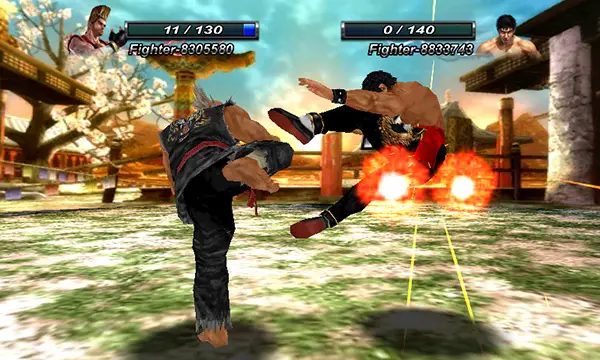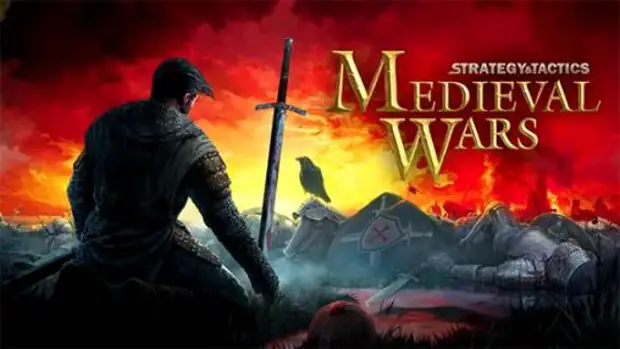 In 1995, Sony’s PlayStation console was still in its infancy when Namco ported one of the greatest fighting franchises of all time from the arcade – Tekken.
In 1995, Sony’s PlayStation console was still in its infancy when Namco ported one of the greatest fighting franchises of all time from the arcade – Tekken.
Street Fighter, the king of fighting games, was an arcade-style button masher whose only real competitor was the gore of Mortal Kombat. The two-dimensional side-scrolling action pioneered by these legendary games hadn’t been veered from much. Virtua Fighter, Soul Calibur, and Battle Arena Toshinden made early attempts at bringing the fighting genre to a 3D landscape, but it wasn’t until Tekken hit the block that we saw a smooth 3D fighting experience.
Tekken‘s intricate fighting system made each character unique, and eventually spawned an underground tournament scene. Now, Bandai Namco finally ported the balanced power system of Tekken to Android in the form of a card game. It may seem like simply another IP ported onto a moneymaking scheme a la Terrance and Phillip’s freemium game on South Park, but Tekken Card Tournament is actually a brilliant strategy game, worthy of comparisons to Magic, Pokémon, and other card game royalty.
Laying Down the Law

On the surface, Tekken Card Tournament is no different than any other Android card game looking to ruin a hardcore IP with yet another Mafia Wars clone. After a few hours, it becomes clear this game has the kinda chops it’ll take to compete in a post-Hearthstone freemium card category.
Familiar characters such as Law, Paul, Heihachi, Jin, Kazuya, and Yoshimitsu are represented in TCT with options to customize each deck and character. Each card represents a move, and after level 10, you can add cards from a tag partner. Building a balanced 15-card deck is essential to win, but no matter how good your deck is, playing the wrong move could cost you everything.
Following the standard Magic: The Gathering model, a starter deck can initially be purchased for each character, followed by booster packs of varying card rarity. Like any other freemium card game, the currency to purchase booster packs can either be earned via playing the game or purchased with real cash through the Play Store.
Decking Out

Building a deck requiresa bit of knowledge about the character’s strengths, weaknesses, and fighting styles. For this, it helps to know a little bit about Tekken’s lore. While this can be accomplished by watching one of the movies (including the animated Tekken: Blood Vengeance and live-action Tekken), fans of Tekken Tag Tournament 1 or 2 will be familiar with each character’s playing style.
Paul and Panda rely mostly on brute strength, while Yoshimitsu hides his cards, Xiaoyu strikes light, fast, and often, and Law keeps opponents off-balance by neutralizing cards. Each turn, your choice to draw, attack, or block can tip the balance of the fight completely. It’s important to read the card effects on both your and your opponent’s cards and play based on the most beneficial outcome. Keep in mind striking when your cards will get the most benefit is something your opponent will anticipate and often counter.
You start with a deck consisting of mostly low-level bronze cards for whichever character you choose. The power of your deck improves as you wade through the solo adventure mode and duel opponents online. Win, lose, or draw, you gain power-ups for completing each fight, similar to the purse system used by professional boxing, MMA, and gaming leagues.
Controlling the Game
The choice to bring Tekken to Android as a card game rather than a fighter seems to be more a matter of mechanics than profit-seeking. Programming the game to work on gestures or on-screen buttons wouldn’t provide the level of control gamers need for this combo-based fighter.
In the days of the PS2, local gamers competed in Tekken Tag underground tournaments. The only rule was typically contestants would need to use the default control scheme. This made competing difficult for many gamers, who programmed specific button combos to the R and L triggers in order to perfect their combo techniques. Remapping the controls to the default took their mind off their game enough to lose to less proficient players.
The developers have always had problems mapping Tekken‘s controls to a gesture-based system. Each fighter is so different and the action is so fast, it made for a glitchy experience. At the Gameworks arcades over a decade ago, gamers flock to a variety of games turned into rides and interactive experiences not offered by home consoles and PCs. On display was a version of Tekken in which you punched and kicked to control your fighter. The experience was more kitch than anything else.
By moving the rock-paper-scissors balance of the fighting game to a card-based game, Namco improved the quality of the game. A touchscreen fighter would not have been able to replicate the Tekken fighting experience in a way fans would expect from such a beloved franchise. Like Hearthstone replicates the Warcraft experience, TCT brilliantly recreates a mobile version of the console experience.
The Road Less Tekken
Overall, the fun gameplay and crisp graphics of the game are enough to make it playable, especially in the free category. The variety of backgrounds and theme music is painfully limited, although what’s available does hold true to the franchise. Load times and connection issues can plague the game on slower devices or under less-than-ideal connections.
If seeking a console-replacement game, Tekken Card Tournament isn’t it. The game lacks any real storyline, instead relying on fans to already know. In addition, the difficulty of some levels on Solo mode would be a lot less frustrating if not for the length of time it takes to restart. These issues aside, it’s still a great game.
Gamers seeking a quick PVP experience while on the go will truly enjoy the challenge of TCT. This isn’t your dad’s Poker or your mom’s Solitaire. This is the type of hardcore Cock Magic the kids in South Park line up to tell their friends about.
Is it Hardcore?
Kinda.
Tekken Card Tournament proves strategy and power balancing makes for a playable free card game on Android.




























